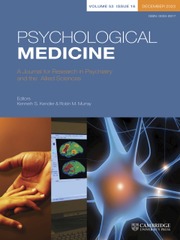Article contents
Loss of a close family member the year before or during pregnancy and the risk of placental abruption: a cohort study from Denmark and Sweden
Published online by Cambridge University Press: 26 September 2013
Abstract
Maternal stress during pregnancy is associated with a modestly increased risk of fetal growth restriction and pre-eclampsia. Since placental abruption shares similar pathophysiological mechanisms and risk factors with fetal growth restriction and pre-eclampsia, we hypothesized that maternal stress may be implicated in abruption risk. We investigated the association between maternal bereavement during pregnancy and placental abruption.
We studied singleton births in Denmark (1978–2008) and Sweden (1973–2006) (n = 5 103 272). In nationwide registries, we obtained data on death of women's close family members (older children, siblings, parents, and partners), abruption and potential confounders.
A total of 30 312 (6/1000) pregnancies in the cohort were diagnosed with placental abruption. Among normotensive women, death of a child the year before or during pregnancy was associated with a 54% increased odds of abruption [95% confidence interval (CI) 1.30–1.82]; the increased odds were restricted to women who lost a child the year before or during the first trimester in pregnancy. In the group with chronic hypertension, death of a child the year before or in the first trimester of pregnancy was associated with eight-fold increased odds of abruption (odds ratio 8.17, 95% CI 3.17–21.10). Death of other relatives was not associated with abruption risk.
Loss of a child the year before or in the first trimester of pregnancy was associated with an increased risk of abruption, especially among women with chronic hypertension. Studies are needed to investigate the effect of less severe, but more frequent, sources of stress on placental abruption risk.
- Type
- Original Articles
- Information
- Copyright
- Copyright © Cambridge University Press 2013
References
- 9
- Cited by




